An introduction to teaching music online

ABRSM Remote Exams – May Update
30 May 2020
ABRSM Remote Exams – June Update
30 June 2020An Introduction to teaching music online
In 2020, a new view on teaching music online has emerged. Fuelled primarily by the COVID-19 Corona virus pandemic and its associated lock down. By late February many music teachers found themselves faced with students cancelling lessons, exams being postponed and as the pandemic accelerated around the world, a lock down that was set to abruptly halt all music lessons for the foreseeable future. The prospect of teaching music online was set to go from a less desirable way of teaching music, to the only way of teaching music.
Many music teachers throughout the nation swiftly sought out ways to deliver online music lessons to their students. Some invested in equipment, others tried to get by with what they had, viewing the practice as a temporary measure. Now, nearly three months since the lock down began and it is looking increasingly likely that teaching music online is here to stay.
In this first post of our teaching music online series, we’re going to introduce the key aspects of online music teaching, from the equipment required, to how to prepare for your remote lessons and beyond. We’ve divided the post into five major categories: Software / Platforms, Hardware / Equipment, Lesson Organisation, Administration & Marketing – each of which will be covered with more depth in our forthcoming posts.
Our aim is to provide music teachers a reliable resource that helps them either establish their online music lesson offering from scratch, or to provide tips on how to improve the online lessons they are already conducting.
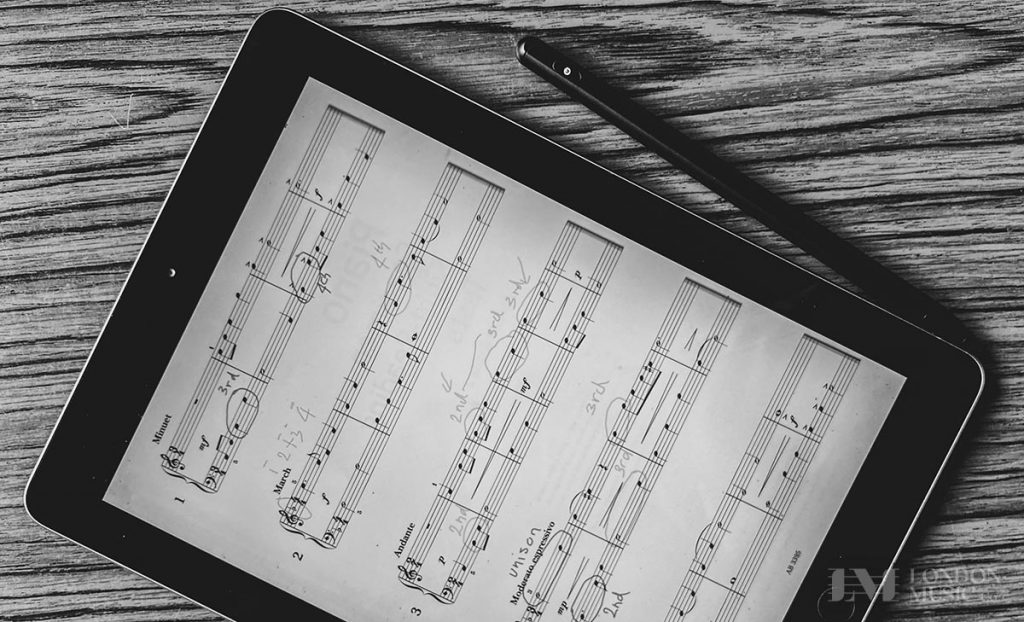
Software / Platforms
Choosing the right piece of software for your online music lessons is important. The software you choose will influence the way in which you conduct your lessons. Ensuring a premium experience for your students is paramount. Your chosen software needs to deliver high quality audio, a clear video stream, be accessible, easy to use and reliable.
There are a wide range of video calling applications available for free, with many offering additional features for a nominal fee. Free versions may be limited to a set number of users, a maximum call duration or provide less configuration options. You will be able to conduct your lessons with most free applications, although you may find that premium features and services are worth the additional cost.
Security of the application you use is a point to consider, although the majority of major video calling applications are secure enough for one-to-one music lessons. It’s useful to remember that your own device should also be fully updated and secure.
Applications

Zoom
Well on its way to becoming a household name, Zoom has exploded in popularity in 2020, fuelled by the Coronavirus pandemic lock down. Zoom is freely available (with some limitations) and offers a good quality video and audio stream. Built-in settings allow you to minimise background noise & echoes, with options to fine-tune this behaviour to suit your environment. You can also blur or mask your surroundings if you need to.
Zoom works on all major platforms; Windows, Mac, Mobile & Tablet.
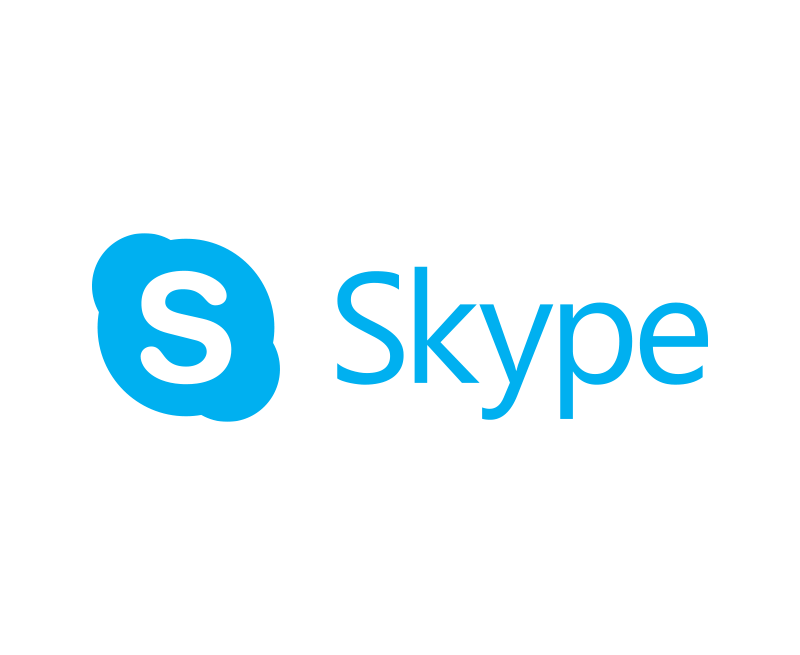
Skype
Skype has been the popular choice for online teaching for a long time. The software has changed over the years, but it remains easy to use, convenient & widely adopted. Skype is available for free and offers a decent quality video and audio stream. Configuration options are available, although it doesn’t quite offer the same level of audio configuration options as Zoom.
Skype works on all major platforms; Windows, Mac, Mobile & Tablet.

Google Duo
Google Duo is a video calling app primarily designed to work with phones & tablets (both Android & iOS) & Google Nest Hub Max. It is also available as a web-based application that works through your browser when used on a computer. Google Duo is very easy to use and works through traditional phone numbers. There are less configuration options available and your audio experience may vary.
Other notable video calling applications include: WhatsApp, Facebook Messenger, Discord, Microsoft Teams & Viber.
Our current recommendation is the free version of Zoom. It provides all the configuration options you need to deliver a good lesson experience to your students, it has a simple set-up and is easy to use. The client can be downloaded and installed easily by your students and there are widely available guides on its use.
We also suggest that you choose and prepare a backup application. Being prepared if there is an outage with your primary choice of software is always a good thing.
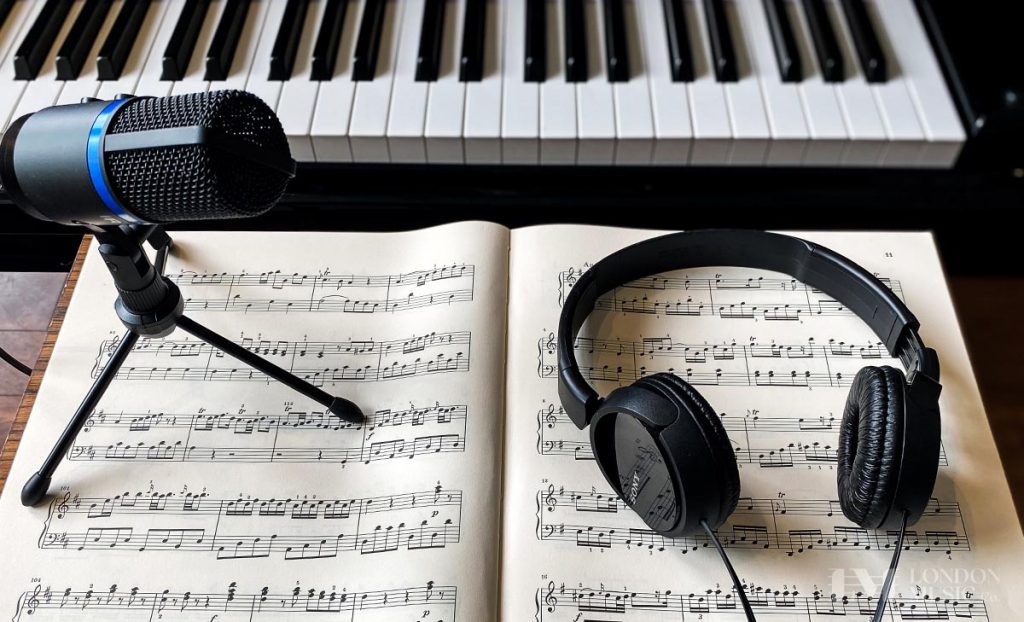
Hardware / Equipment
The hardware you use is dependent on a number of factors, from the instrument you teach, to your budget. Technology continues to rapidly evolve, meaning that even relatively low-budget solutions are capable of delivering a good level of performance. Your setup can range from a basic camera all the way up to a full home studio with all the bells & whistles.
We’ve divided our equipment list into essentials and extras. We recommend using all the essential items in unison to provide the best experience you can.
Essentials
Camera
There are a wide range of cameras available, with many catering for specific use cases and budgets.
At the most basic, you can consider using a built-in camera on your laptop or tablet, or purchasing a separate webcam for your computer. Webcams will do a decent job at showing you, but depending on the instrument you teach, they may not be sufficient. For example, if you teach piano, you’ll want a camera with a wide angle lens in order to fit in the full range of keys for the student to observe. Multi-camera setups are also proving popular among some teachers.
We recommend testing any existing cameras you have before making a purchase decision. Remember that the quality of the camera is not the only important factor, you also need to consider where you are going to mount it to show the angles you need to share with your students. If you teach the piano, wide-angle lens webcams are available, we’d recommend the latest Logitech wide-angle camera for this, as they are fairly priced, good quality and tend to be reliable. Wide angled cameras typically offer a field of view (FOV) of 90 degrees.

Tripod(s)
A tripod may not seem an essential item, but as remote teaching becomes more of a long-term requirement, the consistency and convenience of a tripod will be most welcome. Tripods ensure that camera angles are steady and consistent, giving your students the best experience. Choose a tripod based on whether it can work with your chosen camera/microphone, how adjustable it is and how steady it is once set. You don’t want a tripod that can’t reliably maintain your chosen position.
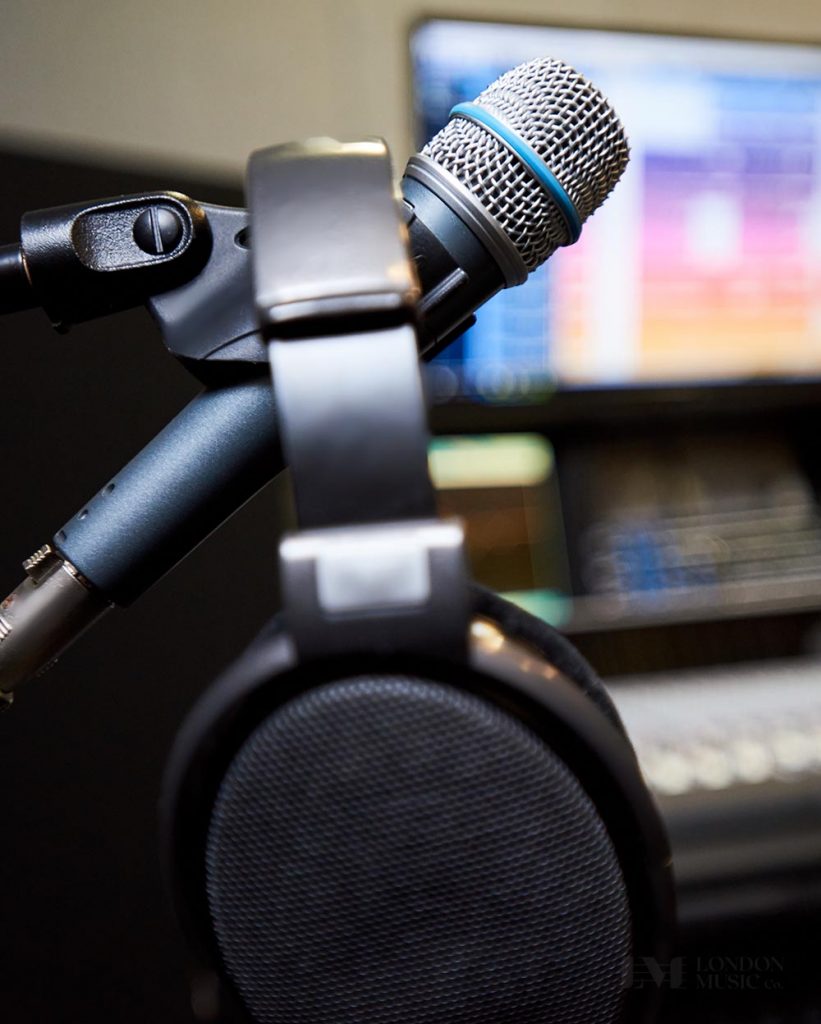
Microphone
Although a lot of modern devices, laptops and phones have high quality built-in microphones, you can always improve on them. High quality sound is key to good online music tuition, so we suggest purchasing a dedicated microphone for the role. All video calling applications should be happy to accept audio from a USB microphone.
Headphones
We consider headphones to be extremely important when video calling, particularly when music is concerned. As good as modern software is at noise cancellation, it frequently makes mistakes and causes audio problems which are completely negated if both parties use headphones. Both you and your student should always use headphones during remote lessons.
Reliable, high-speed internet connection
Internet connections may be ubiquitous, but their performance and quality can vary wildly. You’ll want to be using a reliable ISP that provides high speed broadband. Perhaps more importantly these days is how you access the internet at home. Wireless devices are commonplace and the reliability of your internet can be heavily impacted by problems with your home Wifi. We’ll be posting a guide on how to get the best out of your Wifi in the near future.
Extras
Digital Stylus.
A digital stylus is a pen that allows you to annotate items on your tablet or smartphone as if you would on a normal notepad or score. When used in conjunction with Screen Sharing features on your video calling software, it becomes a useful tool to point things out on a score, or illustrate diagrams when teaching.
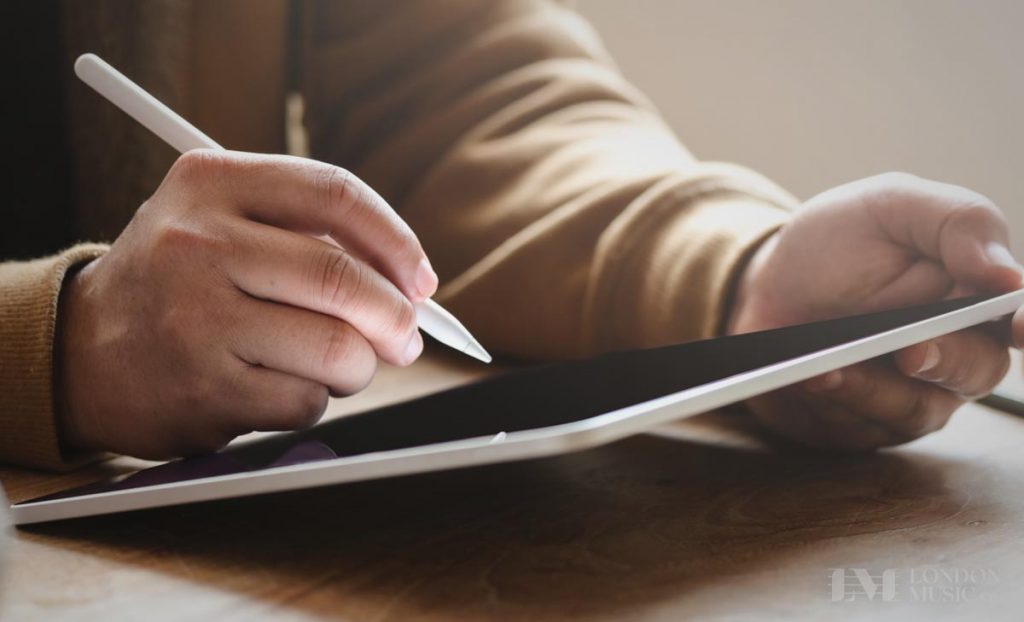
Lighting
To achieve the clearest picture on your video, you may need to consider your lighting setup. Everyone has a unique teaching space, so we recommend testing your picture quality both during the day (natural light) and in the evening (artificial light). As a general rule, you want the brightest light source to be coming from behind the camera, casting light onto your subject.
Webcam Settings & Applications
Depending on your camera of choice, you may need to adjust specific settings such as exposure, contrast and focus. Many webcams will have an associated software package that allows you to adjust these. If the camera doesn’t, an application such as the Webcam Settings app will allow you to make fine adjustments to your camera settings.

Lesson Organisation
Teaching music online by its very nature is different to teaching in person. Lesson preparation and structure becomes more important. For example, you’ll ideally want to make any of your printed lesson materials into a digital format that can be shared with your students during the remote lesson as if you were handing them a piece of paper.
The structure of your lesson is very important when teaching remotely, as especially in the case of younger children, it can be more challenging to keep them focused for the full lesson. You may need to add a little more variety into your lessons in the form of more engaging activities or demonstrations.
You can add extra value to your online music lessons by providing students with a recording of the session, allowing them to review the lesson later as a reference point for their practice.
Administration
With online music tuition, there is typically an increase in the admin tasks involved. Some of this is a consequence of preparing and sharing lesson material and documents to students.
Additional issues that should be considered in advance are how and when you take payments. Many people are used to the ritual of paying a teaching as they pick up their child, or as the teacher leaves their home. With online music teaching, it can be easy to end a call and overlook payment altogether.
We recommend preparing a number of ways your students can pay you and to get them in the habit of paying you at a suitable time, whether that be at the end of the lesson or with a regular transfer for a group of lessons.
Marketing
Establishing yourself as a music teacher when starting out has always been a challenge. Ensuring the local music shops & schools have your details, placing adverts on notice boards and encouraging students & parents to spread the word are staples of marketing for a music teacher.
Perhaps the most important marketing tool for music teachers these days is the internet, particularly in 2020. With music shops and schools closed for months and local notice boards getting nowhere near the attention they used to, listing yourself online has never been more important.
To advertise yourself for online music lessons, we suggest preparing a brief written profile focused on online music tuition. This profile should contain information about your lessons, reference your qualifications and showcase your capabilities as a musician. We recommend taking a good quality photo of yourself to go along with your profile. To target students who want online music lessons, make sure you clearly state that you offer remote lessons and the platforms on which you provide them. Consider offering a free introductory session.
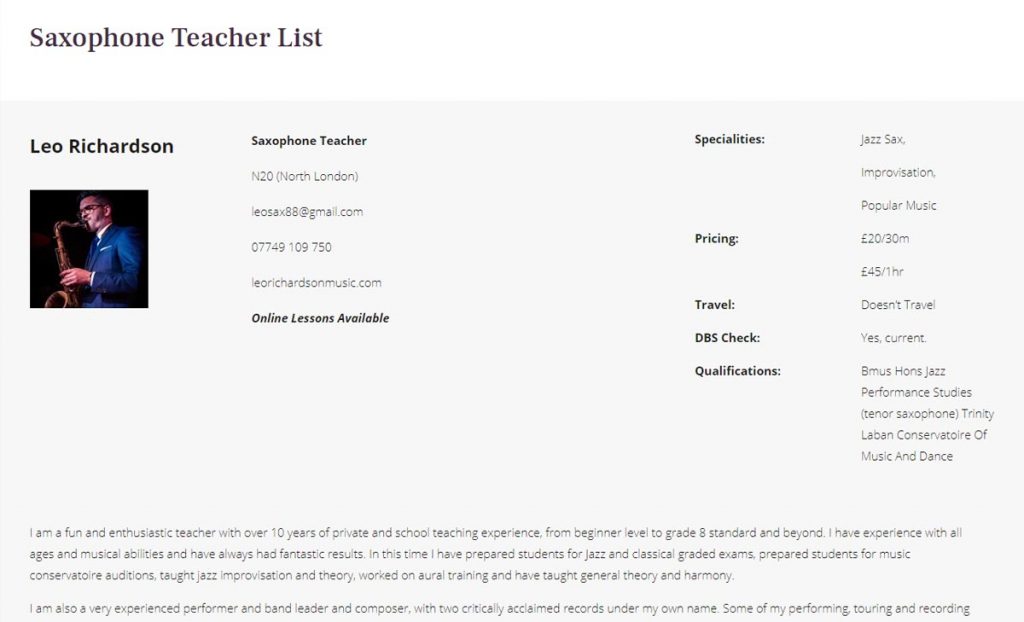
There are many other music teacher lists online and we recommend signing up to several at once. At London Music Co, we provide a free online music teacher listing for the London area, with a section dedicated online music lessons. You can sign up here.
Summary
Teaching music online can be extremely rewarding, both for students & teachers. We expect the popularity of online music lessons to continue to grow, especially in the wake of the Corona virus pandemic.
Take care to prepare your online teaching set-up, ensuring you have a good quality camera, microphone & reliable internet. Talk to your students and ensure they take care in their set-up too, as it is almost as important as yours.
Build your lessons with online teaching in mind, understand some of the limitations of remote learning, but also be prepared to utilise the advantages of technology to deliver a captivating lesson and practice resources post-lesson.
Keep organised and prepare a good profile dedicated to online music tuition and post it online. Use your network to keep people informed of your offering.
Forthcoming posts in the teaching music online series
Stay tuned for our future posts that will go in-depth on each of the major topics, providing specific recommendations and tips on: Software / Platforms, Hardware / Equipment, Lesson Organisation, Administration & Marketing.




